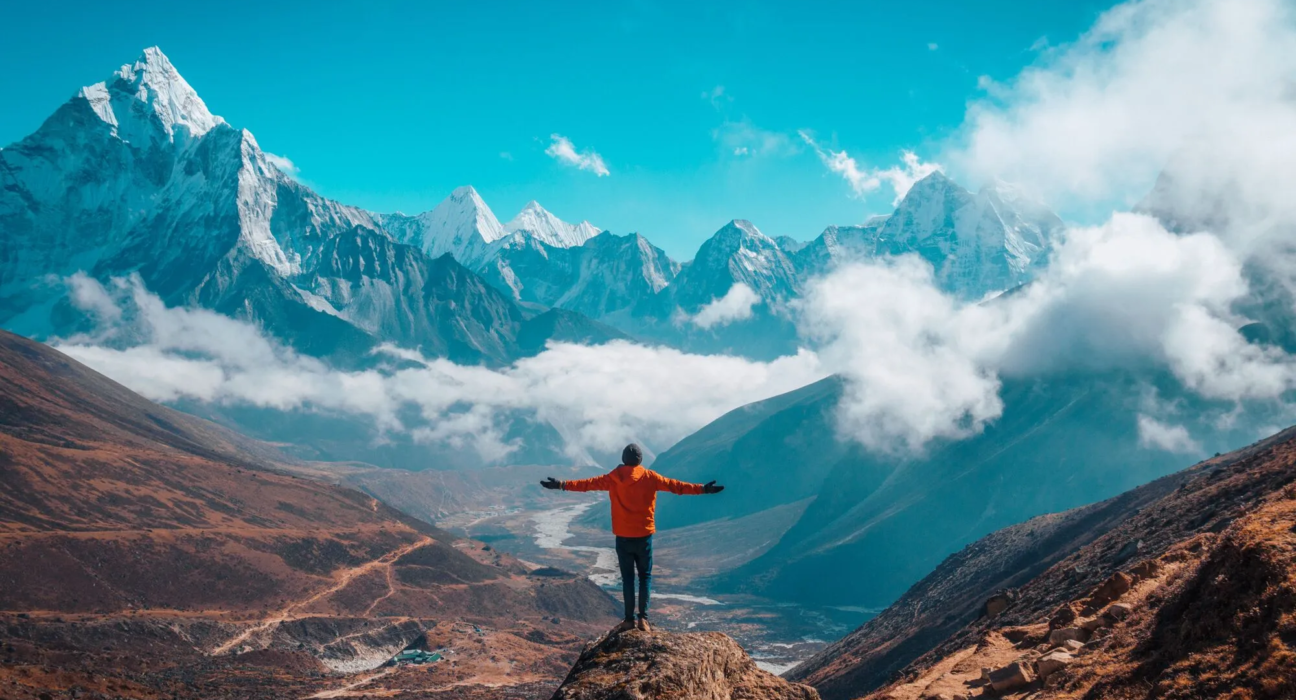For countless adventure seekers worldwide, reaching Everest Base Cam trekking is their ultimate goal. Traveling to the foot of Mount Everest, the highest peak in the world, is an experience unlike any other. It offers breathtaking scenery, a vibrant cultural environment, and an unrivaled sense of achievement. We will cover every facet of the Everest Base Camp hike in this extensive guide, from planning and schedule to route highlights and difficulties.
What is the purpose of Everest Base Camp?
Situated at 5,364 meters (17,598 feet) above sea level in Nepal’s Khumbu area, Everest Base Camp is the starting point for climbers aiming to reach the summit of Mount Everest. Trekking to Everest Base Camp gives travelers the chance to push their physical and mental limits, see Sherpa culture firsthand, and take in the breathtaking Himalayan peaks.
Get Ready and Get Trained
It is crucial to get ready for the difficulties that lie ahead both psychologically and physically before starting the Short Everest Base Camp journey. Building endurance and stamina for the walk can be facilitated by training with aerobic activities, strength training, and hiking while carrying a heavy rucksack. Furthermore, because the walk entails traveling to heights above 5,000 meters, acclimation to high altitudes is essential.
Route of the Everest Base Camp Trek
The Everest Base Camp trip typically lasts between 12 and 14 days, giving ample time for acclimatization and a gradual rise to higher altitudes. The journey often begins with a plane ride from Kathmandu to Lukla, after which hikers traverse charming towns, thick forests, and breathtaking high-altitude scenery. The last town before reaching Everest Base Camp, Gorak Shep, Tengboche Monastery, and Namche Bazaar are among the route’s highlights.
Best Parts of the Journey
A major highlight of the 14-day Everest Base Camp expedition is arriving at the base camp, where mountain climbers from around the globe assemble to attempt to summit Mount Everest. The breathtaking vistas of the surrounding peaks and the Khumbu Icefall convey the vastness of the Himalayas. Along the route, there are stops at monasteries and cultural exchanges with the Sherpa people in addition to panoramic views of Ama Dablam, Lhotse, Nuptse, and Everest.
Challenges
Trekkers should be prepared for the obstacles that come with reaching Everest Base Camp, even though it’s an incredibly rewarding experience. The extensive walking distances, rocky terrain, erratic weather, and high altitude can be physically taxing. A significant worry for hikers is altitude sickness, so they need to be careful to watch for signs and acclimate appropriately to reduce the risk.
A thorough planning process is necessary while packing for the Short Everest Base Camp trek to make sure you have everything you’ll need for a comfortable and safe travel through the high altitudes of the Himalayas. To assist you in getting ready for this incredible journey, below is a thorough packing list:
Clothing:
– Moisture-wicking base layers (tops and bottoms)
– Insulating mid-layers (fleece jacket, down jacket)
– Waterproof and windproof outer shell jacket and pants
– Trekking pants and shorts
– Thermal socks and hiking socks
– Trekking boots with ankle support
– Camp shoes/sandals
– Warm hat and gloves
– Sun hat and sunglasses
– Buff or neck gaiter
Gear and Equipment:
– Backpack (40-50 liters)
– Sleeping bag (rated for cold temperatures)
– Sleeping pad or inflatable mattress
– Trekking poles
– Headlamp or flashlight with extra batteries
– Water bottles or hydration system
– Duffel bag or backpack for porters
Personal Items:
– Personal toiletries (toothbrush, toothpaste, biodegradable soap, etc.)
– Quick-dry towel
– Sunscreen and lip balm with SPF
– Personal medications and first aid kit
– Wet wipes and hand sanitizer
– Insect repellent
– Tissue or toilet paper
Accessories:
– Camera or smartphone for photos
– Power bank or portable charger
– Trekking map or guidebook
– Journal and pen
– Snacks and energy bars
– Cash (small bills) and credit/debit cards
– Passport and travel documents
Miscellaneous:
– Lightweight daypack
– Trekking permits and necessary documentation
– Travel insurance details
– Portable water purification system or water purification tablets
– Trash bags for waste disposal
– Repair kit (needle and thread, duct tape)
– Snorkel mask (for dust protection at higher altitudes)
Optional Items:
– Gaiters (for snowy or muddy conditions)
– Portable oxygen canister
– Portable solar charger
– Trekking umbrella
– Portable altitude chamber (PAC) for emergencies
Notes:
– Pack light and only bring essentials to minimize weight.
– Layering clothing is key for adapting to changing weather conditions.
– Check the weather forecast and adjust your packing list accordingly.
– Consider renting or buying gear in Kathmandu or Namche Bazaar if needed.
You can make sure you’re ready for the beauty and challenges of this famous Himalayan journey by adhering to this thorough packing list for the Everest Base Camp hike. Enjoy every second of your journey to Everest Base Camp with Sherpa Expedition and Trekking, and don’t forget to pack sensibly and remain hydrated.
Sherpa Trekking & Expedition: Your Go-To Trekking Company
Selecting the appropriate trekking organization is essential for a fruitful Everest Base Camp journey. Reputable trekking company Sherpa Expedition offers knowledgeable guides, meticulously thought-out itineraries, and a dedication to sustainability and safety. You may hike confidently and worry-free to Everest Base Camp when Sherpa Expedition is your trekking partner.
In summary
A once-in-a-lifetime experience, trekking to Everest Base Camp delivers a special fusion of scenic beauty, cultural immersion, and personal accomplishment. You may make your goal of trekking to Everest Base Camp come true by following this instructions and selecting Sherpa Expedition as your trekking partner. Get ready for an incredible trip to the world’s roof and make lifelong memories.






